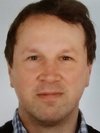Opportunities
Welcome to the opportunities page of Section 4.6 Geomorphology at the GFZ. Here, we provide information and list contact details for internships, student projects, and job openings within our section.
We welcome students and interns with an interest in the Earth and Environmental Sciences and geotechnical engineering. The research areas in our section include geomorphology, environmental seismology, geochemistry, and natural hazards. Your activities could include:
- work in our labs, focusing on biochemistry, sediment and water analysis, or physical processes,
- the analysis of seismic, geochemical or remotely sensed data, or
- the design and construction of scientific equipment in our electronics and construction laboratories.
In the past, we have hosted students and interns for periods ranging from two weeks to six months. Limited financial support may be available, depending on topic, background and length of the internship. If you are interested in a thesis or an internship with us, please contact geomorphology-students@gfz-potsdam.de. To find a good match, it would be helpful if you include a short description of your background, your interests, including specific research groups or projects with which you would like to be involved, and possibly a CV. Before you contact us, our current research themes can support you in identifing your interests.
Student Projects
We offer joint supervision of bachelor and master’s projects together with a professor at your university. You can look through our project and staff pages and approach a suitable scientist with your project idea. If you do not have a project idea, don’t worry! We have many and you can find some of them in the list below. For general inquiries, contact our senior scientists with a brief description of your background and interests, they can put you in touch with suitable scientists in the section:
- Taylor Schildgen: geomorphology & landscape evolution
- Dirk Sachse: biogeochemistry, carbon cycle & climate archives
- Jens Turowski: physical processes at the Earth’s surface & fluvial geomorphology
Potential Bachelor or Master’s Projects:
- How quickly do mountains change shape?
This project focuses on the long-term evolution of landscapes subject to strong gradients in rainfall. Theoretical and laboratory models have shown that strong rainfall on one side of a mountain range will cause it to shift its whole shape over time, leading to a lateral shift in the drainage divide toward the drier side. In this project, we will take advantage of a unique thermochronology dataset that suggests a lateral shift in the drainage divide over time of a range within the Central Andes. By combining landscape evolution modelling with the thermal model Pecube, we will quantify the rate at which the mountain has changed shape, and use newly obtained erosion-rate data from cosmogenic nuclides to test the impact of this shape-shifting on modern erosion patterns.
Contact: Taylor Schildgen - Stochastic modelling of valley evolution
We have recently developed models for the width of fluvial valleys. In the project, a stochastic model for the temporal evolution of valley width would be implemented and explored.
Contact: Jens Turowski - Fluvial bedrock erosion in the lab
Using specifically designed erosion mills, the experiments can be used to investigate sediment and rock property controls on fluvial impact erosion, and to calibrate the mills to natural rivers.
Contact: Jens Turowski - How quickly is in-stream wood destroyed by moving bedload particles?
This question will systematically investigated using laboratory experiments with our abrasion mills.
Contact: Jens Turowski - Do fungal mycelium networks make hillslopes more stable?
Fungi are everywhere in the soil, consisting of networks of strings called mycelium that can span over large areas. These strings need to break when a slope fails, and we want to quantify their breaking strength and effects on soil stability in laboratory experiments.
Contact: Jens Turowski - How does the terrestrial carbon cycle work?
In this project we plan to investigate how surface processes, like erosion and riverine transport, affect the amount and the composition of biospheric carbon (i.e. from soils and modern plants) during their transport from mountain slopes into the ocean. We work on several example river systems in the Himalayas and the Andes. See also project ROCcycle. This project is suited for students interested in geomorphology, sedimentology, organic geochemical analysis and carbon cycle studies.
contact: Dirk Sachse - How fast and why did climate change in the past?
In this project we use organic geochemical tools (biomarkers or organic compounds deposited in in lake sediments and their stable isotope ratios) as recorders climatic changes in the geological past. We reconstruct paleohydrologcial changes and identify drivers of past climate change. We particularly focus on the end of the last Glacial Period and the Holocene, see also project STEEPclim. This project is suited for students interested in organic geochemical analysis and paleoclimate questions.
contact: Dirk Sachse - How regional is ‚global‘ climate change?
In this project we use available high-resolution paleoclimate data (from biomarkers and other proxies) from several climate archives across spatial domains (like Europe) got understands spatial patters of climate change. This project is suitable for a student interested in data analysis, statistics, spatial data analysis and time series analysis and no lab work is required. See also some relevant questions in the STEEPclim project.
contact: Dirk Sachse













